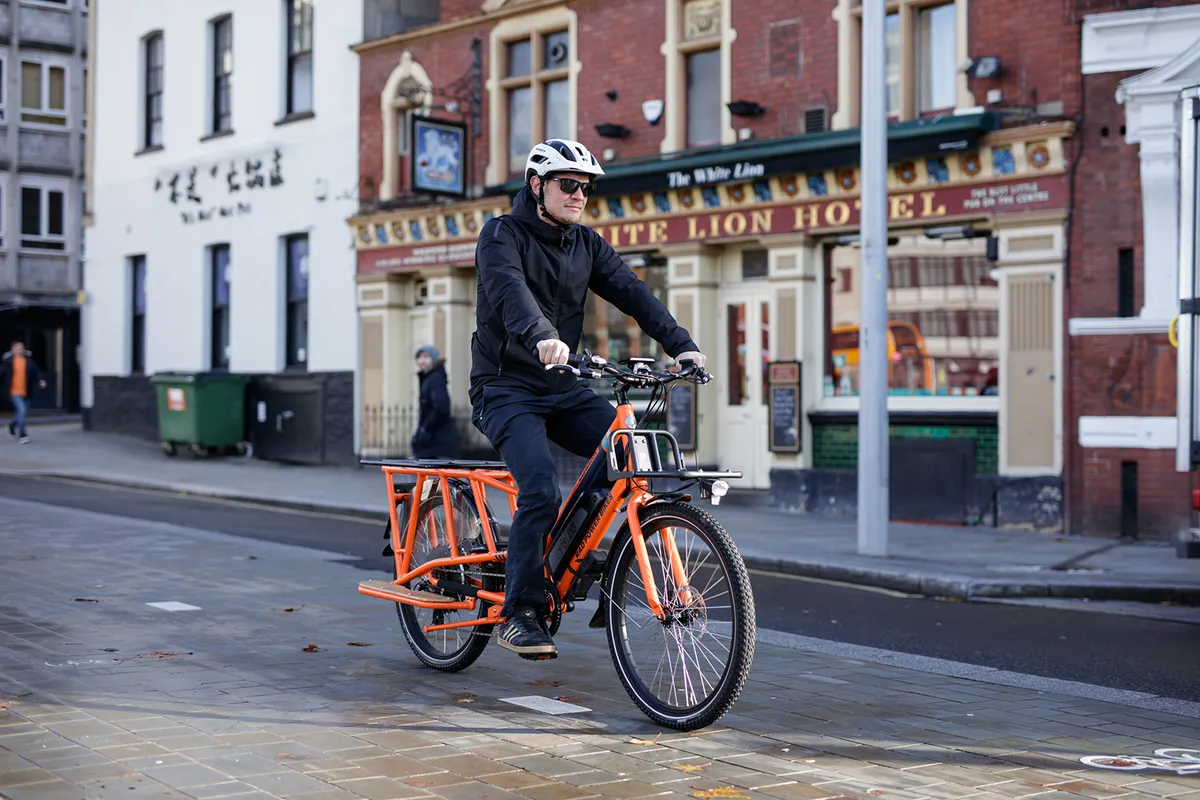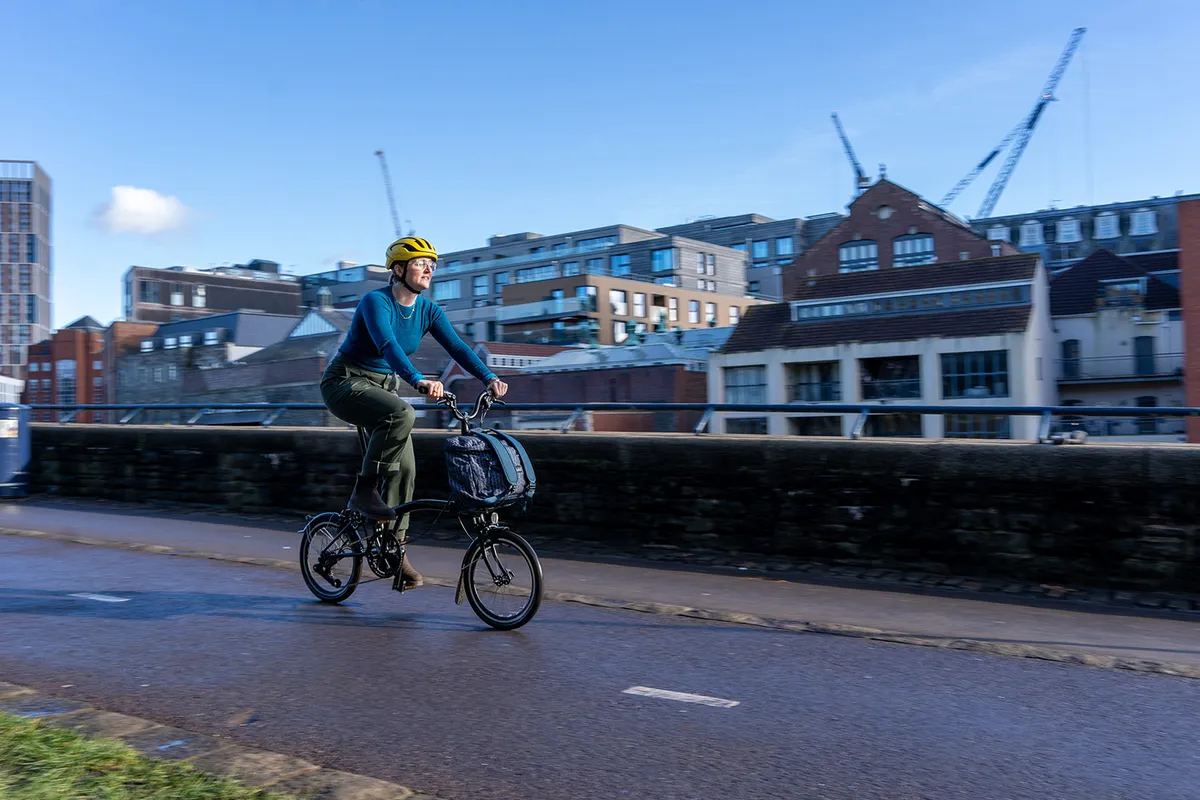Cycling to work has health, financial and environmental benefits, and the increasing popularity of commuting by bike backs this up.
The number of cycling trips is up 47 per cent on weekdays and 27 per cent on the weekend year-on-year in the five months to the end of July, according to data published by the charity Cycling UK.
As fuel prices peaked in July 2022, journeys by bike exceeded the peak of the lockdown cycling boom in July 2020, the charity also claims. Cycling UK head of campaigns Duncan Dollimore says 71 per cent of these trips are fewer than five miles, or eight kilometres. Many active people won't need to train or wear Lycra to ride such a distance.
The number of cycling stages (defined by The Department for Transport as a part of a journey completed by bike) per year has been trending upwards for the past decade: from 800 million in 2010 to 1.3 billion in 2020. The number per person has also gone up.
As fuel prices rocket, the cost of driving is a good reason to leave the car at home. Moreover, biking to work improves your health and can be enjoyable.
If you still need persuading that life on two wheels is for you, read on for more benefits of cycling to work.

Why you should cycle to work in 2022
1. It’s cheaper

Anyone who’s filled up a car with petrol or diesel lately will have winced at the cost.
Research by Blackhawk Network, an employee benefits platform, found that commuters can save £750 a year by biking to work. The saving rises to £1,100 per annum if you live in Greater London.
The same workers reported a 63 per cent increase in the cost of getting to work, which puts price rises in the bike industry into context.
Meanwhile, bike lights brand See.Sense estimates that its customers saved more than £185,000 in fuel costs, in one week. Cyclists who own See.Sense lights were asked to log their journeys for the week leading up to Cycle to Work Day, using the companion app.
Not all of the best bikes for commuting are cheap, but the Cycle to Work scheme, which many UK employers offer, eases the burden for a typical earner by up to a third.
2. It’s healthier

Even the average UK commute by bike of five miles (perhaps half an hour of leisurely urban riding) has health benefits. Ride home and you’ll have done an hour’s exercise while barely noticing.
You don’t only burn calories on the bike. Sports scientists say riding that length of time is enough to raise your metabolism for hours afterwards.
Routine cyclists’ fitness equates to that of someone 10 years younger, the National Forum for Coronary Heart Disease Foundation in America has reported.
Besides the exercise, you’ll receive a bigger dose of vitamin D, even if it’s cloudy, than sitting in the car or on a train – just make sure you wear sunscreen if the UV index is high.
Built-up areas are no one’s favourite place to ride, but an urban commute will still raise endorphin levels, improving your mood.
If you're so inclined, you can even build workouts into your commute.
3. It’s quicker

Yes, on the open road a car will be quicker than you. The tables turn in town though.
Studies have found the average speed of a cyclist in London traffic is faster than a car: in the City of London a car averages 7.6mph , while a cyclist averages 14mph.
Because a bike is easier to park than a car – 10 bikes fit in one car parking space – you’ll save time when you get to work, especially if your workplace has secure cycle parking.
4. It’s time-efficient

Recreational cyclists and those preparing for races or events, such as a 100-mile ride, can use cycling to work as training.
Taking it steady is valuable base training. Once you've worked out your training zones, on other days, you could try interval training or ride at tempo for a less strenuous, yet still effective workout.
Our tips for getting fitter on the commute will give you more inspiration.
Getting miles in when you’d otherwise be sitting down on the train or driving means you won’t feel the need to cram on weekends. This can lead to overtraining syndrome.
It’s satisfying and feels productive to accomplish a session before beginning work too.
5. It’s better for the environment

Although the environmental impact of the cycling industry could be reduced, riding a bike is a form of low-emission transport.
We’ve looked into cycling’s environmental impact and found a car’s emissions are 13 times greater than a bike’s.
Intriguingly, we calculated that the best electric bikes may be greener than unassisted bikes.
Requiring fewer calories and therefore lower food consumption, electric bikes produce fewer greenhouse gas emissions in their lifespan than purely pedal-powered bikes, taking account of extra emissions from electricity production and battery manufacturing.
An electric bike is still far more environmentally friendly than an electric car.
As for resource consumption, making a bike uses just five per cent of the energy and materials necessary to produce a car.
Vehicles emit nearly three-quarters of UK air pollution and 22 per cent of CO2 emissions. Whereas, biking to work releases none.
CO2 emissions would be cut by 44,000 tonnes each week (enough to heat 17,000 houses) if all commutes of less than five miles were by bike not car.
6. It’s more fun

Few things raise stress levels more than being stuck behind the wheel in traffic.
Busy train carriages and delayed or cancelled rail services aren’t great either.
Commuting by bike in the northern hemisphere, particularly in winter, isn’t going to be a bed of roses.
But the tips in our biking to work guide will make the commute more enjoyable. Our complete guide to winter road cycling will see you on your way in the colder months.
If you’re already a cyclist, you shouldn’t need encouragement to do more of your passion. If you're not, give it a go: few people turn back to the car after getting into biking to work.
Avoid getting stuck in a rut by taking the same way in and out, and look for alternatives using the best cycling apps, such as Strava and Komoot. On a gravel bike, you could mix it up with an off-road shortcut or detour.
You can make your commute home a social activity by getting your friends into cycling. Check how to ride in a group if you’re new to riding with people or simply need a refresher.

